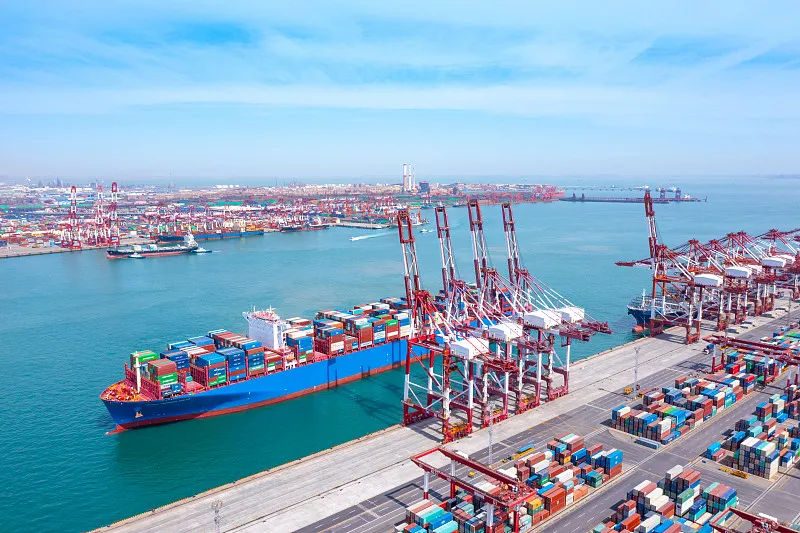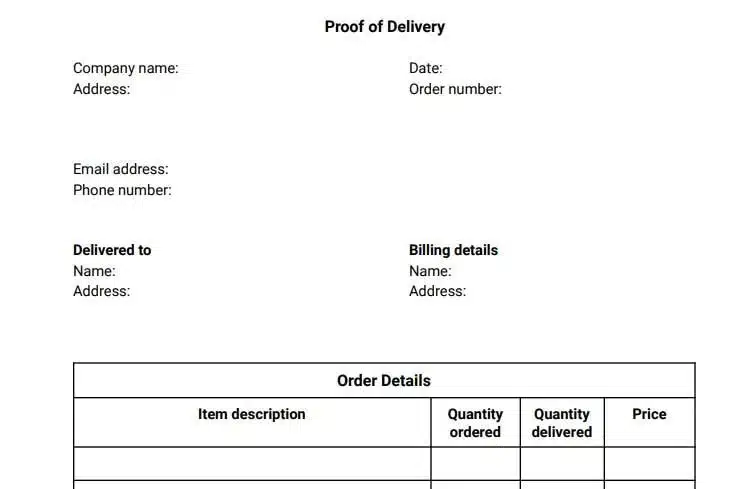When shipping goods from China to Thailand, choosing the right method can significantly impact costs and delivery speed. Whether you’re looking to move large volumes of cargo or urgent, high-value items, there are several options with advantages, challenges, and costs.
For businesses engaged in international trade, understanding the nuances of sea freight, air freight, and other shipping methods is key to optimizing supply chains and minimizing unnecessary expenses. Below, we’ll break down the different shipping options, estimated transit times, and factors that influence shipping costs between China and Thailand, helping you make an informed decision for your logistics needs.

Shipping from China to Thailand
When shipping goods from China to Thailand, there are several transportation methods to choose from, each with its own advantages and considerations:
Sea Freight
Sea Freight is the most cost-effective option, ideal for large, heavy, or non-urgent shipments.
Disadvantages: Slowest mode of transport, with transit times ranging from 1 to 3 weeks, depending on the ports involved.
Shipping Types:
- FCL (Full Container Load): You book an entire container (20ft, 40ft, etc.). Best suited for bulk shipments.
- LCL (Less than Container Load): Your goods share a container with other shipments. Billed based on volume (CBM) or weight—ideal for smaller loads.
Main Port Routes:
- China: Shanghai, Shenzhen, Ningbo, Guangzhou, Qingdao
- Thailand: Laem Chabang, Bangkok Port (Klong Toey)
Air freight
Air freight is the fastest shipping option, making it the go-to choice for time-sensitive, high-value, lightweight, or small-volume shipments—such as samples, electronics, or urgent spare parts. It offers unmatched speed, with a typical transit time of 3 to 7 days, including pickup, customs clearance, and final delivery. However, this convenience comes at a premium, as air freight is the most expensive shipping method. Major routes run from key airports in China—such as Shanghai (PVG), Beijing (PEK), Guangzhou (CAN), Shenzhen (SZX), and Hong Kong (HKG)—to Bangkok’s Suvarnabhumi Airport (BKK) in Thailand.

Factors Affecting Shipping Costs from China to Thailand
Shipping costs from China to Thailand can vary significantly depending on various factors. Here are the key elements that influence pricing:
- Nature of Goods: General cargo, sensitive goods, hazardous materials, temperature-controlled goods, etc., each incur different costs.
- Weight and Volume: Shipping costs are typically calculated based on actual or volumetric weight (whichever is greater). Volumetric weight calculation method (e.g., air freight): Length (cm) x Width (cm) x Height (cm) / 6000. Sea freight LCL (less than container load) is primarily charged by volume (CBM).
- Shipping Method: Air freight > Land transport > Sea freight.
- Origin and Destination: Specific cities/ports/airports can affect costs.
- Transit Time Requirements: Expedited services are typically more expensive.
- Incoterms: Such as EXW, FOB, CIF, DDP, etc., which determine the scope of costs and risks borne by each party. For example, DDP (Delivered Duty Paid) includes all fees and duties from door to door.
- Market Demand & Seasonality: Freight rates increase during peak seasons (e.g., before holidays).
- Fuel Surcharges: Vary with international oil prices.
- Customs Duties and Taxes: Importing goods into Thailand requires payment of customs duties and value-added tax (VAT), typically not included in the basic freight rate unless the DDP term is selected.
- Insurance: Costs for cargo transportation insurance.
- Additional Services: These include warehousing, packaging, reinforcement, customs declaration, customs clearance, door-to-door delivery, etc.
Shipping Cost from China to Thailand
Understanding shipping costs is essential in international trade. It helps you plan your budget more effectively and avoid unexpected expenses. Below is a breakdown of the costs associated with different shipping methods.
Sea freight from China to Thailand
The approximate sea freight cost for LCL (Less than Container Load) shipping from China to Thailand ranges from $50 to USD 100 per cubic meter. For FCL (Full Container Load) shipments, a 20ft container generally costs between $750 – $ 2,050, while a 40ft container ranges from $1,350 – $ 2,550. Please note that actual costs may vary depending on the departure and destination ports.
To get the most accurate and competitive shipping rates, it’s recommended that you contact Hongocean Freight Forwarding directly. Be sure to provide detailed information about your shipment—including the type of goods, total weight and volume, port of origin and destination, and your preferred delivery timeframe—to receive a tailored quote. Below are the estimated costs for standard container shipments:
| Container shipping service from China to Thailand | Type of container | Ocean freight rates from China to Thailand |
|---|---|---|
| How much does it cost to ship a container from Shanghai China to Thailand | 20 foot container FCL 40 foot container FCL | average price from: $1150 20FT average price from: $1550 40FT |
| How much does it cost to ship a container from Shenzhen China to Thailand | 20 foot container FCL 40 foot container FCL | average price from: $750 20FT average price from: $1750 40FT |
| How much does it cost to ship a container from Ningbo-Zhoushan China to Thailand | 20 foot container FCL 40 foot container FCL | average price from: $1000 20FT average price from: $1850 40FT |
| How much does it cost to ship a container from Hong Kong China to Thailand | 20 foot container FCL 40 foot container FCL | average price from: $850 20FT average price from: $1550 40FT |
| How much does it cost to ship a container from Guangzhou China to Thailand | 20 foot container FCL 40 foot container FCL | average price from: $950 20FT average price from: $1950 40FT |
| How much does it cost to ship a container from Qingdao China to Thailand | 20 foot container FCL 40 foot container FCL | average price from: $1250 20FT average price from: $2050 40FT |
| How much does it cost to ship a container from Tianjin China to Thailand | 20 foot container FCL 40 foot container FCL | average price from: $1250 20FT average price from: $2050 40FT |
| How much does it cost to ship a container from Dalian China to Thailand | 20 foot container FCL 40 foot container FCL | average price from: $1350 20FT average price from: $2350 40FT |
| How much does it cost to ship a container from Xiamen China to Thailand | 20 foot container FCL 40 foot container FCL | average price from: $950 20FT average price from: $1750 40FT |
| How much does it cost to ship a container from Yingkou China to Thailand | 20 foot container FCL 40 foot container FCL | average price from: $1250 20FT average price from: $1850 40FT |
Air freight cost from China to Thailand
Air freight takes a shorter time and is suitable for urgent and time-sensitive goods. Air freight has certain restrictions on the volume and weight of goods, and is usually not suitable for large quantities and heavy weights. Cost composition:
- Freight: Air freight is usually calculated by kilogram or cubic meter, and the weight and volume of the goods will affect the price.
- Fuel surcharge: A surcharge based on the fuel price, usually calculated by kilogram.
- Security inspection fee: Security inspection fee for all air cargo to ensure aviation safety.
- Tariffs and customs clearance fees: Includes customs clearance fees at the destination airport, and may also be subject to import tariffs.
- Ground handling fees: The cost of loading, unloading, storage and operation of goods at the airport.
| City in China | City in Thailand | Cost for 50 kg (USD) | Cost for 100 kg (USD) | Cost for 500 kg (USD) |
|---|---|---|---|---|
| Beijing | Bangkok | 250 | 500 | 2500 |
| Shanghai | Chiang Mai | 255 | 550 | 2750 |
| Guangzhou | Phuket | 245 | 450 | 2250 |
| Chengdu | Pattaya | 248 | 480 | 2400 |
Door to Door shipping cost and transit time from China to Thailand
For door-to-door costs and transit times from China to Thailand, it’s important to understand that DDP (Delivered Duty Paid) shipping can be arranged via sea or air freight. Under this method, the seller—or you, as the shipper—assumes full responsibility for all shipping-related expenses, including freight charges, insurance, taxes, and duties. Choosing DDP shipping can help you save both time and money by eliminating the hassle of handling customs clearance, taxes, and import duties yourself.
| hipping Type | From (China) | To (Thailand) | Total Cost (USD for 100kg) | Transit Time (Days) | Cost per Kilo (USD) |
|---|---|---|---|---|---|
| Air Freight | Shanghai Airport | Bangkok Airport | 1100 | 2 | 11 |
| Air Freight | Beijing Airport | Phuket Airport | 1200 | 3 | 12 |
| Sea Freight | Port of Shanghai | Port of Bangkok | 700 | 14 | 7 |
| Sea Freight | Port of Guangzhou | Port of Laem Chabang | 800 | 16 | 8 |
| Road Freight | Shanghai | Bangkok | 1500 | 10 | 15 |
| Road Freight | Beijing | Chiang Mai | 1600 | 12 | 16 |
To give you a better idea of international shipping expenses, here are some sample shipping costs to other countries:
How Much Does it Cost to Ship from China to Nigeria?
How Much Does it Cost to Ship from China to Slovakia
How Much Does it Cost to Ship from China to Kenya?
Shipping Cost from China to Finland
How Much Does it Cost to Ship from China to Bulgaria?

Tips to Reduce Freight Costs from China to Thailand
Controlling freight costs is the key to increasing profits in international trade. Here are a few tips to reduce freight costs from China to Nigeria:
Choose the right mode of transport
Choose the most cost-effective mode of transport based on the nature, quantity and shipping time requirements of the goods
Arrange shipping time reasonably
Try to avoid peak periods, such as before the Chinese New Year in China and before Christmas in Nigeria, to avoid peak freight increases.
Optimize cargo packaging
Pack the goods reasonably to reduce volume and weight and avoid unnecessary freight expenses.
Book in advance
Booking space in advance can lock in lower prices and avoid price increases caused by temporary arrangements.
Choose a professional freight forwarder
A professional freight forwarder can assist in arranging the right mode of transport and customs clearance procedures to avoid unnecessary delays and additional costs.
How Long Does it Take to Ship from China to Thailand
The main ways to transport from China to Thailand are air and sea. The specific transportation time depends on the selected express company, transportation method and cargo characteristics. For specific locations, prices and timeliness, please consult Hongocean!
Factors Affecting Shipping Time from China to Thailand
There are many factors affecting shipping from China to Thailand, and these factors jointly affect the entire transportation process.
- Transportation methods: Different transportation methods have significant differences in transportation time, cost and safety.
- Cargo characteristics: The weight, volume, shape, nature, etc. of the cargo will all affect the choice of transportation method. Some goods will also undergo special processing, which will increase the time.
- Weather Conditions: Adverse weather conditions may cause shipping delays.
- Seasonality and demand fluctuations: Certain seasons may have an impact on shipping times, and during peak shipping seasons, shipping times may also be affected by issues such as port congestion.
- Routes and flight frequencies: including the time difference between direct flights and transit routes.
Sea Freight Time from China to Thailand
Sea freight is a cost-effective option for large, non-urgent shipments. Goods are typically loaded at major Chinese ports such as Shanghai, Ningbo, or Shenzhen and transported via the South China Sea, around the Malay Peninsula, before arriving at Laem Chabang Port or Bangkok Port in Thailand. The average transit time ranges from 12 to 20 days, depending on the specific route and shipping schedule. Below are the estimated transit times from various Chinese ports to Thailand:
| Port in China | Port in Thailand | FCL 20 foot Transit Time (Days) | FCL 40 foot Transit Time (Days) | LCL Transit Time (Days) |
|---|---|---|---|---|
| Beijing | Bangkok | 14 | 15 | 18 |
| Shanghai | Chiang Mai | 12 | 13 | 16 |
| Guangzhou | Phuket | 16 | 17 | 20 |
| Chengdu | Pattaya | 15 | 16 | 19 |
Air freight time from China to Thailand
Air freight is ideal for small, high-value, or time-sensitive shipments but has relatively higher transportation costs. Shipments typically depart from major Chinese airports, such as Shanghai, Beijing, and Guangzhou, and fly directly to Bangkok Suvarnabhumi International Airport. With a shorter transit time of 3 to 5 days, air freight is the fastest shipping option for urgent deliveries.
| in China | in Thailand | Transit Time (Days) |
|---|---|---|
| Shanghai | Bangkok | 4 |
| Tianjin | Laem Chabang | 5 |
| Guangzhou | Phuket | 3 |
| Shenzhen | Songkhla | 5 |
The Most Cost-Effective Way to Ship from China to Thailand
For Small Shipments (Under 15-20 Cubic Meters):
- LCL (Less than Container Load) is typically the most cost-effective option for smaller shipments. This method allows you to share a container with other shippers, reducing the overall cost for smaller shipments that don’t fill a full container.
For Larger Shipments (Enough to Fill a Container):
- FCL (Full Container Load) generally offers the lowest unit cost (per kilogram or cubic meter) when you have enough cargo to fill or nearly fill an entire container.
However, there are several factors to consider before deciding:
1. “Cheapest” vs. “Lowest Total Cost”:
- Cheapest doesn’t always mean the lowest total cost. You need to factor in all the costs involved in getting your goods from the factory to the final destination, including the following: Sometimes, a seemingly cheap sea freight option might become more expensive due to unexpected delays, additional fees, or issues with paperwork.
2. Time Costs:
- Sea freight is generally cheaper but takes longer. If delays affect your sales, production, or deadlines, the higher air freight costs might be worth considering for faster delivery.
3. Get Custom Quotes:
- Shipping costs vary significantly based on cargo type, carrier, and season. Always request specific quotes for your shipment to determine the cheapest option.
In Summary:
- Carefully compare your shipping options, including cost, timing, and total expenses. Choose a reliable partner who can handle your cargo efficiently and ensure that all associated costs are considered to avoid surprises later on.




